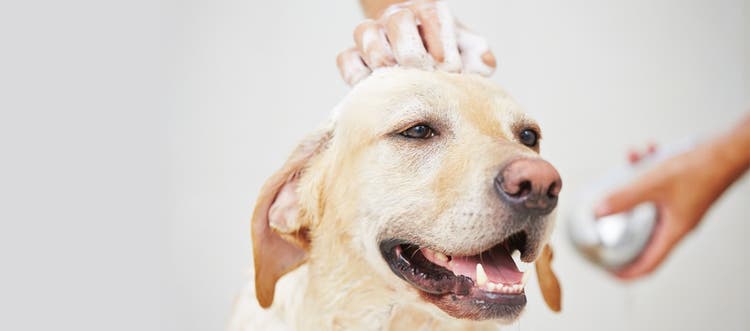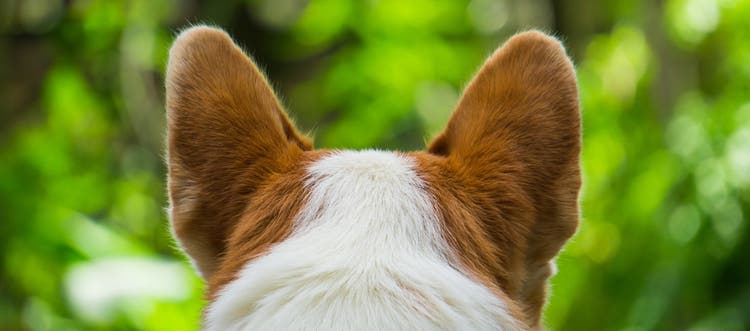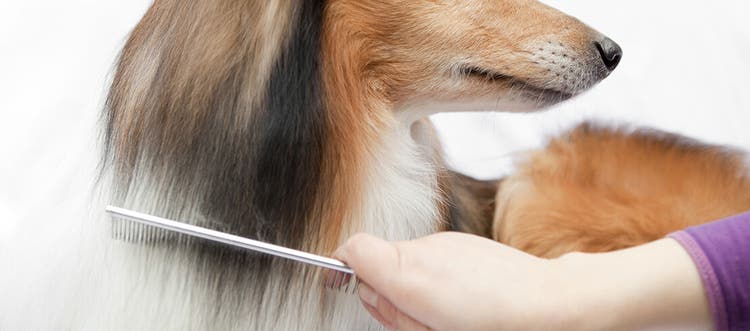Learn the steps for cleaning your pet’s ears.
Just like humans, dogs and cats sometimes get waxy or gunky buildup in their ears. In these situations, cleaning your pet’s ears keeps the skin lining of their ear canal clean and healthy; gets rid of dirt, wax and debris; and helps prevent the buildup of bacteria or yeast that could lead to infections. Additionally, if your dog or cat already has an ear infection, cleaning their ears allows prescribed medications to more easily reach infected areas.
Your vet may recommend ear cleaning at home as part of a treatment plan or grooming routine. Here’s how to clean your dog’s or cat’s ears safely and effectively.
What Supplies Do You Need to Clean Your Dog’s or Cat’s Ears?
A little preparation can go a long way toward making the ear-cleaning experience pleasant for you and your pet. Make sure you have:
- A veterinarian-recommended ear cleanser for dogs or cats. Your vet will be able to point you toward the best cleaning solution for your pet’s needs.
- Cotton balls or soft gauze. Avoid cotton swabs or cotton-tipped applicators as they can push debris deeper into your pet’s ear canal and damage the eardrum.
- Treats and praise to reward good behavior
Did You Know?
Dogs and cats have L-shaped ear canals, which makes it easier for debris to collect, particularly in the “bend” where the vertical and horizontal canals meet.
How to Clean Your Dog’s or Cat’s Ears in 5 Easy Steps
Before you begin, choose an area that makes you both comfortable, keeping in mind that cleaning your pet’s ears can be a little messy. Your bathroom, garage or patio are all good options.
To clean your pet’s ears, follow these steps:
- With one hand, gently pull your pet’s ear flap up and angle it slightly back toward the top of the head. This will help straighten the ear canal.
- With your other hand, fill the ear canal to the brim with the ear cleansing or flushing solution. Be sure to avoid touching the tip of the nozzle to the ear canal to help prevent contaminating the ear cleaning solution.
- Release the ear flap and gently massage the base of the ear between your thumb and fingers for one to two minutes. This will help dislodge wax and debris stuck deep inside the ear canal.
- Step back and allow your pet to shake their head. (This can get messy, so have a towel ready.)
- Remove excess ear cleaning solution and debris from the outer ear with dry cotton balls or soft gauze. It’s not necessary to get the ear completely dry.
Don’t forget to reward your pet with treats and praise for their good behavior!
Did You Know?
Cats and smaller dogs can be wrapped in a towel “burrito-style” to help hold them in place. Wrap a towel around the shoulders of larger dogs to help keep their coats clean.
When to Contact Your Vet
If your dog or cat objects to having their ears handled, or their ears seem to be causing them pain, contact your veterinarian for an examination before proceeding with at-home ear cleaning. You should also contact your veterinarian if your pet:
- Has a strong odor coming from their ears
- Shakes or scratches at their ears with greater intensity or frequency
- Develops swelling on any part of their ear
With a little patience and a lot of love and affection, ear cleaning can become an easy part of your pet’s normal wellness routine.
Did You Know?
Cleaning the ears too frequently can be irritating, so follow your veterinarian’s advice regarding how often you clean your pet’s ears.





